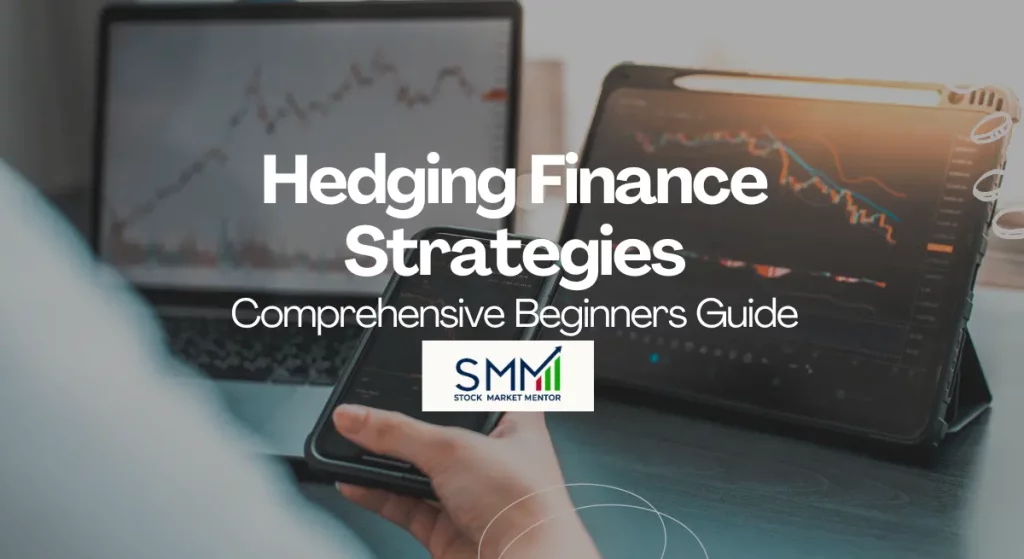Hedging finance is a standard practice in the stock market that investors follow to safeguard themselves from losses that might arise from market fluctuations. In a way, hedging is insurance that helps the investor reduce their losses, but it does not prevent negative things from happening during business.
Table of Contents
What Hedging Finance is of three types, namely:
Forward contract:
A forward contract, which is not a standard agreement, means selling defined assets at a specific price to someone on a set date agreed by two different parties. A forward contract is an example of a derivative type, and as such, it can be an asset genre of a broad range of basic types, like commodities, currencies, etc. Learn Financial Challenges in Stock Market.
Futures contract:
Contract futures are a traditional financial services instrument. They are a standard agreement between one party to purchase specific tools for a fixed price on a specified date agreed by two relevant parties. The expired futures contract can be traded for various assets, such as commodities, currencies, and other market instruments.
Money Markets:
This includes residual activities of currencies and money market operational interplay, which involve interest, called equities, where short-term loans, borrowing, selling, and lending with more than one year of maturity occur.
Who uses a Hedging Finance strategy?
Hedging Finance strategies are commonly used by retail traders familiar with the financial markets and can anticipate fluctuations within the economy as the basis of their expected income. Although Hedging Finance is seen as a preserve of large market players, an ordinary person can also implement this strategy in their day-to-day transactions and even more significant sums of capital, like managing investing portfolios. Professional traders and institutional investors will also use the strategies when implementing this strategy. Often, a hedge is a tool to assist the risk management you will use to protect your trade account. Trading in volatile markets can present consequent risks for an investor: consequences may be equally stratified into currency and interest rates, political, social, and economic instability, extreme weather in the form of geographical changes, and commodity disruption, which is a demonstration of how poor management of environmental resources can result in several detrimental consequences. These arguments are essential, considering that, in fundamental analysis, a trader needs to reflect on these points before deciding on an entry position. In this manner, they can schedule their Hedging Finance strategies before the markets run so they do not take that significant loss due to the market’s instability.
What are the commonly used tools in Hedging Finance
Derivatives
The majority of investors who are trying to hedge often utilize derivatives. These are the financial life forms linked to a real object, such as a stock, and which have their value. To complete the list, we must mention that the option is the most commonly used derivative. As an investor, you can buy or sell a share at a predetermined price within a particular time.
Yes, there was the thought in my mind that the price might rise, so you wanted to purchase the stock and limit the possible loss when the price falls. If many participants are bearish, you would likely buy puts. You can benefit from automatic buy-back of the stock at its original price for a small commission. A second example would be to imagine that you purchased a stock and it goes down; in this case, a put would be put in place to combine with the money you invested minus the fee.
Diversification
Diversification is another big strategy for Hedging Finance. You own an assortment of assets that do not rise and fall together. If one asset collapses, you will retain everything. For instance, many people own bonds to offset the risk of stock ownership. When stock prices fall, bond values used to keep rising.
Hedging Finance Strategies
There are lots of Hedging Finance strategies, and everyone is different. Investors are encouraged to use multiple strategies but different ones for the best results. Below are some of the primary Hedging Finance strategies that investors should think of:
Diversification
As often as we hear the sentence “Don’t put all your eggs in one basket,” it remains true in financial matters, generally regarding one fund. It arises when a saver decides to invest at places where his investment experiences movement and prices at different levels. In short, it is like owning a volume in each unassociated asset and the potential of none of the ones to fall and the others to rise. For example, an individual buys securities from a hotel, a private hospital, and malls. Should an adverse event happen in the tourism sector, which is where the hotel operates, the other investments will maintain independency status because they have zero relation.
Arbitrage
We have deployed an arbitrage strategy that is simple yet very smart. It describes the practice of child soldiers ‘ involvement where a soldier from any one country is recruited from another market and is then paid to serve in a militia group of their own country. This is the technique that is widely applied on the Stock Exchange. Let’s pick an elementary example of an inexpensive junior-grade teenager shopping in a nearby ad outlet for just Rs. Jaikishan bought a skateboard worth Rs. 145 for his classmate. 170. The buddy is quite happy that she has saved a decent amount of money by purchasing from the market as a piece of the same clothing is on sale at Rs.210.
Average down
The strategy of buying deep is when a retailer resorts to purchasing additional units of a selected product even though the price or selling price of the commodity has declined. Investor generally on the stockmarket uses this kind of Hedging Finance as their protection strategy. In a down market, if a position they possessed previously slumps, they can purchase more units at a cheaper rate. The so-called “buy low” and “sell high” method is, however, more than engaging in one or two transactions – it involves effective market timing, wherein the profit from the second purchase will compensate for the losses caused during the first.
Staying in cash
This strategy is as easy as it looks like the word. The investor keeps some of his money in cash, Hedging Finance against potential losses in his investments.
Conclusion
Hedge finance is an investment used in financial markets to reduce the negative effects of unfavourable price movements on Stock market training. Most often it involves lots of options for buying options & futures and derivatives, to serve as a hedge against their underlying assets.



